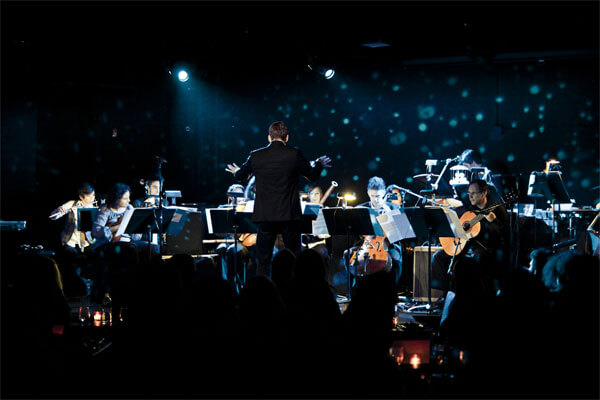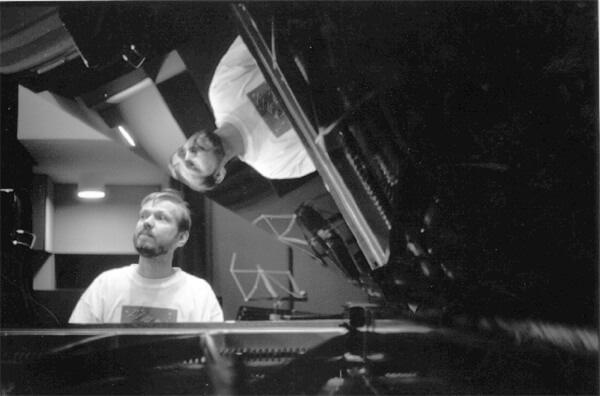 On August 5, ICE began their residency at New York’s annual Mostly Mozart Festival with an explosion of bold, colorful works. The excitement seemed apt as the Lincoln Center concert also marked the beginning of their tenth year as an ensemble. ICE’s program showcased a variety of adventurous contemporary music while imprinting their own take on the theme of this year’s festival: birds. Rather than adhering strictly to the subject, the ensemble interspersed pieces influenced by natural settings with pieces using birdsong, creating a context (à la Catalogue d’oiseaux) in which the latter inhabited the former.
On August 5, ICE began their residency at New York’s annual Mostly Mozart Festival with an explosion of bold, colorful works. The excitement seemed apt as the Lincoln Center concert also marked the beginning of their tenth year as an ensemble. ICE’s program showcased a variety of adventurous contemporary music while imprinting their own take on the theme of this year’s festival: birds. Rather than adhering strictly to the subject, the ensemble interspersed pieces influenced by natural settings with pieces using birdsong, creating a context (à la Catalogue d’oiseaux) in which the latter inhabited the former.

Olivier Messiaen’s Piece for piano and string quartet began the concert in a fanfare-like fashion. An incisive four note gesture in the strings provided the perfect herald into Messiaen’s sound world. Each section unfolded after a tense silence, revealing a series of juxtaposed ideas without transitions. The piano hammered out a few dense chords indicative of the composer’s coloristic language before being joined by the strings in a unison rhythm, giving the impression of a single but immense voice speaking. The central episode featured a perpetual bout of rapid birdsong from the piano (in classic Messiaen style) with quick interjections from the quartet. The players engaged the fast-paced conversation with compelling accuracy, as if seamlessly finishing each other’s sentences. Recapitulating chords descended the keyboard in a sighing, almost jazzy motion. The four striking notes from the strings returned to end the piece the way it began.
Luca Francesconi’s Islands provided a nice change of pace. Using nature for informed compositional processes rather than Messiaen’s musical “translation,” this energetic concerto for piano and chamber orchestra was wonderfully inventive in its execution. The percussionists sent out grains of drum and mallet hits that jumpstarted the first of many crazed piano cadenzas. The woodwinds followed suit, racing around each other with fluttering scales. The continuously rushing notes suggested the music of Xenakis in their seemingly endless combinations, but it was the jazz-infused rhythms that gave the piece its true flavor: during a few sections, the piano and percussionists locked in to a few unpredictable accents to pepper the texture like that of a big band. Limiting the piano to frenzied riffs in the low register while jamming with the bongos, the music shifted from pure nature to city life (perhaps something out of a 1970s chase scene.) It made sense that Francesconi noted using tides as a compositional method for his piece: gestures seemed to ebb and flow as they passed from one instrument to the next. The ever-shifting musical material demanded a highly responsive ensemble and ICE delivered with clarity and nuance. Guest soloist Nicolas Hodges displayed unwavering command of the piano during his leaping solos while conductor Susanna Mälkki kept firm control with easily discernible gestures for even the most complex passages.

On a program evocative of birds and natural landscapes, Jukka Tiensuu’s nemo for (partly amplified) chamber orchestra and electronics made the perfect centerpiece, employing both themes through literal and suggestive means. In between episodes of a driving tutti dabbling in a somewhat Middle Eastern sounding melody, solis by various members of the ensemble mingled with samples from nature. Flute, clarinet, and violin warbled together, their ranges overlapping in bits of rhythmic repetitions, as a field recording of birds gradually entered beneath them from the speaker system. The superimposition of actual birdsong with their musical approximation resulted in a sonic mystification: the listener was caught between real and imitative, recorded and live. Other moments of wonder contributed to a more watery setting. For instance, a bending note figure hinted at early on in the piece erupted into a full-fledged group glissando, equipped with maximum reverberation that enlarged the acoustical space. The resulting trippy wash of sound was like watching objects bend and distort in a swirling aquatic vortex. Mälkki highlighted the change in atmosphere by swaying with the curves of the sound, treating harmony like water. The ensemble also used vocalization evocative of whale song, with tranquil sustained harmonies that provided a beautiful counterbalance to the jumpy, animated birdsong.

Unfortunately, the second half of the program was not as engaging as the first. Tristan Murail’s La Barque mystique for flute, clarinet, violin, cello, and piano was full of densely orchestrated color, but often too darkened by its lower shades. The piano played heavily in the lowest register, which tended to drown out the rest of the ensemble’s often microtonal meanderings. Despite its diverse palette of techniques like flutter tongue and am steg, the piece succeeded more in its standstills of massive sound, followed by Messiaen-like weighted silences. These gestures gave shape to the aural landscape, like witnessing aural glaciers pass by.
Oiseaux exotiques, perhaps the only “standard” on the program, depicted ICE as the youthful ensemble they are: energetic, bold in their interpretation, and fearless in their execution. But the attitude felt too aggressive for the Messiaen piece which concluded the night. Surely the quickened tempos chosen by Mälkki contributed to the anxious atmosphere; she maintained an exactness akin to a Boulez interpretation, but without his patience. Hodges nailed the tricky runs of birdcalls that permeated every nook and cranny of the piano, but often with too much speed and pedal, blurring the result. The piece calls for a lot of space and dryness in between gestures, something that the group did not always respect.
Even the slower, more repetitive gestures seemed harsh at times. The closing unison birdcall—a massive accent that is repeated many times in uniform rhythm—had more of a Rite of Spring violence to it than a mantra-like nature. Overall, it felt more like the ensemble was searching for the end of the piece rather than dwelling in its color. Perhaps even Messiaen is a little old-fashioned for ICE, whose focus is on contemporary works of the future, not the past. With already over 500 new works under their belt, surely the group has their eyes set on premiering a lot more in their tenth year.
—
Andrew Tham is a composer and music blogger living in Chicago.
























